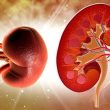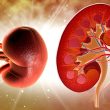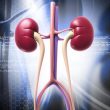Use of IV bicarbonate instead of saline and administration of oral N-acetylcysteine are not effective strategies for preventing contrast-associated acute kidney injury in patients with chronic kidney disease undergoing angiography, according to the randomized PRESERVE trial that was presented at the AHA 2017 Scientific Sessions and published simultaneously in the New England Journal of Medicine...
The transradial approach reduces the risk of kidney injury in acute patients
It remains unclear whether transradial access, compared with transfemoral access, presents a different risk of post-procedural kidney injury for patients admitted with acute coronary syndrome. Historically, it has been considered (without any evidence) that, given the higher difficulty associated with transradial access, it would require longer fluoroscopy time and higher contrast volume, which would eventually...
Sinus Aspiration against Contrast Induced Kidney Injury: Yes or No?
Contrast induced kidney injury incidence is in direct correlation to the administered contrast. The aim of this study was to assess the safety and efficacy of sinus aspiration immediately after PCI as a measure to reduce the volume of contrast arriving in the kidneys. The study included 43 patients with diabetes and renal impairment...
Hemodynamic Monitoring Optimization Reduces Kidney Injury in Carotid Stenting
Original title: Acute kidney Injury in Patients UIT Chronic Kidney Disease Undergoing Internal Carotid Artery Stent Implantation. Reference: Michael Donahue, et al J Am Coll Cardiol Interv 2015;8:1506-14 Post procedural acute kidney injury (AKI) in patients with chronic kidney disease has been associated with major events; however, the cause is still unclear. This study analyzed 126...
Post PCI bleeding can cause kidney injury
Original title: Impact of Periprocedural Bleeding on Incidente of Constrast-Induced Acute Kidney Injury in patients treated with Percutaneous Coronary Intervention. Reference: Yohei Ohno, et al. J Am Coll Cardiol 2013;62:1260-6 Contrast induced acute kidney injury (CI-AKI) is a serious complication associated to higher morbimortality rates and higher costs, but its correlation to bleeding remains controversial. This study included...
What is the contrast media dosing that predicts acute kidney injury after TAVI?
Original title: Renal Function-Based Contrast Dosing Predicts Acute Kidney Following Trancatheter Aortic Valve Implantation Reference: Masanori Yamamoto, et al. J Am Coll Cardiol Intv 2013;6:479–86. Acute kidney injury (AKI) presents in 10 to 30% of patients undergoing TAVI; it is associated to the increase of morbidity and mortality and it prolongues hospitalization. This study included 415 patients with...
Simplified Rapid Intravenous Hydration for the Prevention of Contrast-Induced Nephropathy in Patients with Chronic Kidney Disease
Patients with chronic kidney disease (CKD) undergoing coronary angiography are at increased risk of developing contrast-associated acute kidney injury (CA-AKI), which is associated with increased mortality. According to current guidelines, the standard treatment for preventing CA-AKI in patients with moderate to severe CKD is long-duration peri-procedural intravenous hydration with saline solution. This standard hydration is...
ESC 2021 | Acute and Chronic Myocardial Injury in COVID-19 Patients and Impact in Mortality
In patients hospitalized for COVID-19, both acute and chronic myocardial injury impact survival at 6 months. In addition, the risk does not disappear after the acute phase of the disease, instead it persists in the following months among those who survive. This study was presented at the scientific sessions of ESC 2021 and was simultaneously...
Major Cause of Myocardial Injury by COVID-19
The most common cause of myocardial necrosis in patient undergoing COVID-19 infection is microthrombi. These microthrombi resulted quite different in composition vs. thrombi obtained from COVID-19 negative patients and thrombi obtained from infected patients with ACS. Myocardial injury is common in patients hospitalized for COVID-19 and has worse prognosis. Regardless its frequency, the mechanism and...
Predilation in TAVR and Myocardial Injury
Performing balloon predilation or valvuloplasty before a transcatheter aortic valve replacement (TAVR) may increase the incidence and magnitude of myocardial injury with new-generation balloon-expandable valves. Some papers argue in favor or against direct implantation, others remain neutral, but this research is the first one to express a different point of view. Historically, the biggest fear...









